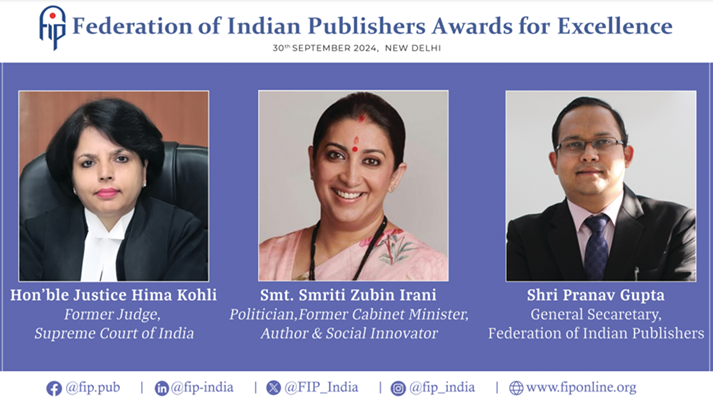Arundhati Roy Explains How Mahatma Gandhi Favoured ‘The Privileged’ In Fights Against Casteism And Racism
- December 24, 2021
In a new book titled Rebels With A Cause, Famous Dissenters and Why They Are Not Being Heard, the author, Professor T.T Ram Mohan traces the trajectory of famous dissenters like Arundhati Roy, Oliver Stone, Kancha Ilaiah, David Irving, Yanis Varoufakis, U.G. Krishnamurti and John Pilger to depict how, in practice, dissent tends to be severely circumscribed and it is only the celebrity status of these dissenters in some cases that have kept them from being actively harmed.
For instance, Mohan propounds that Arundhati Roy has been nothing but controversial in her decades-long career, taking on the establishment, and always being the mouthpiece of the marginalized. The Indian government, the Indian judiciary, the United States, Israel, large corporates, the mainstream media, Narendra Modi, and many others have earned her scorn. Mohan writes in his book that, “Roy wants to set the whole world right. When you make so many enemies, it’s hard to survive. Roy’s international stature has spared her the crippling costs that often go with denouncing the high and mighty. But for her celebrity status, she may well have been trampled over long back, perhaps languished in obscurity in an Indian jail.”
Roy, who has generally been an active critic of the Hindutva brigade has also not spared the likes of Mahatma Gandhi, and B.R. Ambedkar in the past. In TT Ram Mohan’s book, the author recalls how Roy’s introduction to Ambedkar’s Annihilation of Caste stirred a firestorm. Mohan writes:
“In early 2014, Arundhati Roy wrote a lengthy introduction to one of B.R. Ambedkar’s most powerful works, Annihilation of Caste, published by Navayana, a publishing house in New Delhi. The introduction is not just about the book or even about Ambedkar. A large portion of it is devoted to Gandhi. The Gandhi that Roy portrays is not the champion of the oppressed that we know. He is a spokesman for the ‘haves’ in society, whether in South Africa or in India. Roy’s essay takes Gandhi down a peg or two. Much as Roy admires Ambedkar, she doesn’t spare him either. She suggests his views on Adivasis are as patronizing as Gandhi’s on Untouchables. She says Ambedkar saw Adivasis as backward, even savage. The Indian Constitution, of which Ambedkar was the author, allowed the Indian state to appropriate Adivasi homelands, reducing Adivasis to ‘squatters on their own land’.”
Needless to say that this introduction didn’t go down well with many. While Gandhi’s grandson and noted historian Rajmohan Gandhi claimed that it was aimed at ruining Mahatma’s image, Dalits criticized Roy for maligning Ambedkar’s name. Mohan explains that the reason Annihilation of Caste was revolutionary in its intent was because it propounded that caste cannot be annihilated by abolishing untouchability or through inter-caste marriage or inter-caste dining which were means that many Hindu reformers had urged over the years.
Mohan writes:
Roy’s lengthy introduction does not say a great deal about Annihilation itself. It talks more about the evolution of the caste system and the predicament of the Untouchables in Hindu society. ‘Untouchables’ is one of two expressions Ambedkar preferred to use, the other being Depressed Classes. The expression ‘Dalit’ came into vogue much later. (I use the word ‘Untouchables’ in this essay only to be true to Ambedkar’s usage. Roy uses the same expression.) Roy also pits Gandhi against Ambedkar in the battle against the caste system.
Roy sees Gandhi as a defender of the caste system. His campaign against untouchability, she argues, was intended to keep the Untouchables within the Hindu fold without dismantling the caste system itself. Roy dwells at length on how Gandhi frustrated Ambedkar’s ceaseless efforts to get justice for the Untouchables. Then comes the unkindest cut of all: Gandhi’s views on caste were consistent with his reactionary views on race while in Africa—on both matters, Gandhi was a spokesman for the privileged. I touch upon Gandhi’s views on race during his stay in Africa a little later.
Roy quotes Gandhi as saying in 1921: “I believe that if Hindu Society has been able to stand, it is because it is founded on the caste system . . . To destroy the caste system and adopt the Western European social system means that Hindus must give up the principle of hereditary occupation which is the soul of the caste system. Hereditary principle is an eternal principle. To change it is to create disorder. I have no use for a Brahmin if I cannot call him a Brahmin for my life. It will be chaos if every day a Brahmin is changed into a Shudra and a Shudra is to be changed into a Brahmin.”
Again, in 1921, Gandhi wrote in his journal Navjivan: Caste is another name for control. Caste puts a limit on enjoyment. Caste does not allow a person to transgress caste limits in pursuit of his enjoyment. That is the meaning of such caste restrictions as inter-dining and inter-marriage . . . These being my views I am opposed to all those who are out to destroy the Caste System. Gandhi could not have been more explicit in his views on the subject. Roy says that many of Gandhi’s early interventions in caste conflicts showed that he was interested in abolishing untouchability but not the caste system itself.
Mohan writes that Roy sought to connect Gandhi’s position on caste with his views on race while in South Africa: in both matters, she contends, Gandhi stood for the privileged minority. In Mohan’s book, he writes:
“Roy’s account of Gandhi’s stay in South Africa is something of an eye-opener. This is not the Gandhi story that we grew up with, the story of his heroic struggles in the cause of the oppressed that earned him the title of ‘Mahatma’. Roy argues that Gandhi’s was
a limited battle intended to benefit the better-off Indians in South Africa. In this battle, Gandhi initially tried his best to collaborate with the British Empire in the hope of winning concessions. He showed little interest in the ordinary Indian worker or the black population. Roy believes that Gandhi’s views on the Blacks in South Africa were downright racist and that his ‘views on race presaged his views on caste’.
Gandhi went to South Africa to take up a case for a wealthy Indian merchant. A few months later, there occurred the famous incident in which Gandhi was thrown out of the first-class compartment of a train because it happened to be reserved for Whites. The story we have all been told is that this traumatic incident produced the great awakening in Gandhi about the racist nature of rule by the white man and led to his battles with the British Raj in South Africa and in India.
But that is not Roy’s understanding of this incident. Her interpretation is explosive:
Gandhi was not offended by racial segregation. He was offended that ‘passenger Indians’—Indian merchants who were predominantly Muslim but also privileged-caste Hindus—who had come to South Africa to do business, were being treated on a par with native Black Africans. Gandhi’s argument was that passenger Indians came to Natal as British subjects and were entitled to equal treatment on the basis of Queen Victoria’s 1858 proclamation, which asserted the equality of all imperial subjects.
In other words, Gandhi was offended by racism only insofar as it affected a privileged category of Indians. He wasn’t troubled by the racism that the white rulers practiced towards the vast majority of people in South Africa.
The following excerpts have been published with permission from Penguin Publishers.







